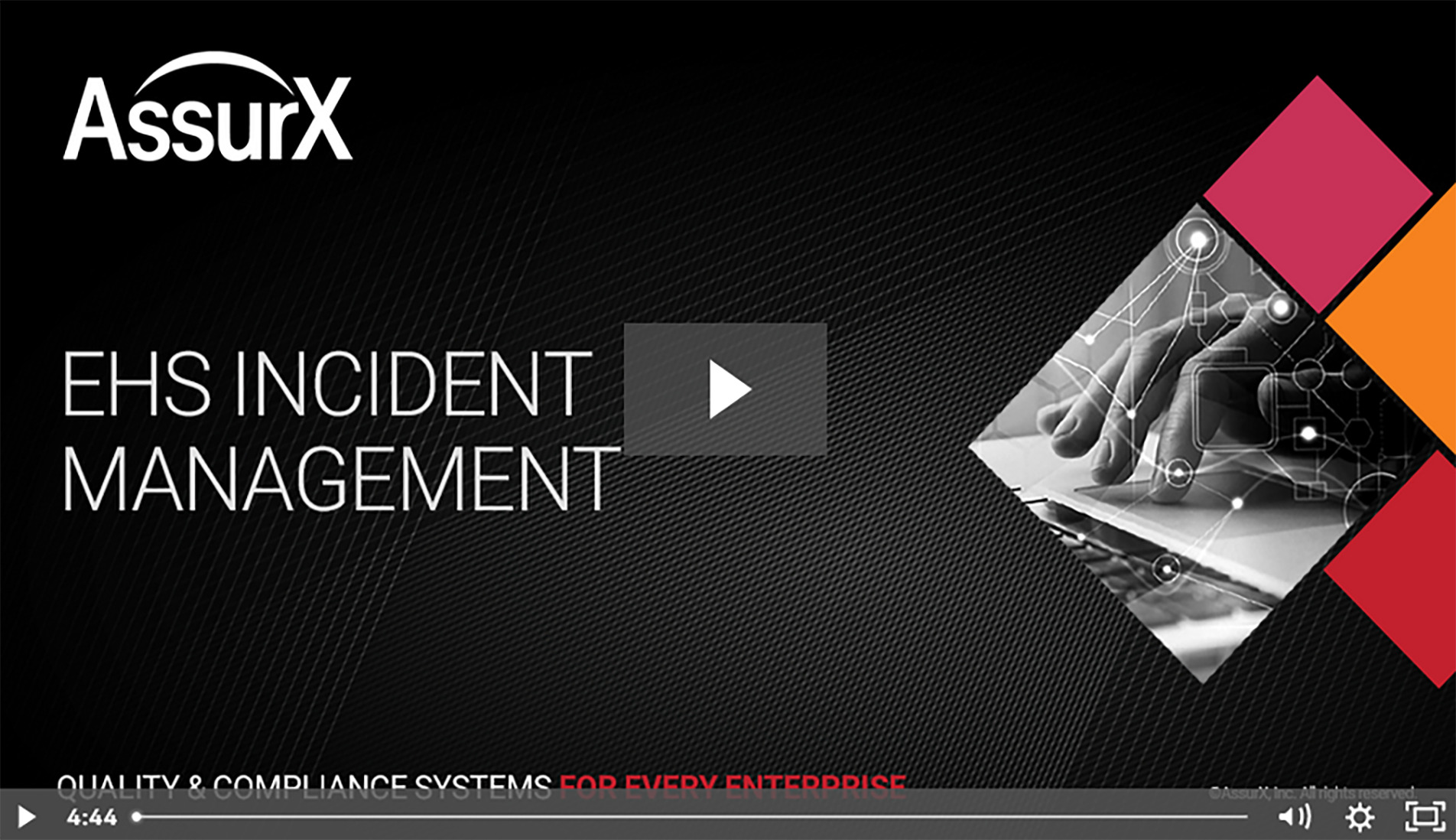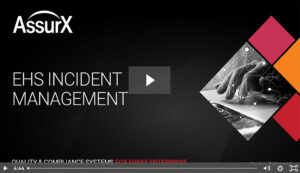April 6, 2023
In 2021, the U.S. Occupational Safety and Health Administration (OSHA) conducted over 24,000 inspections, most of them without advance notice.
For manufacturers, it raises the question: if OSHA inspectors showed up at your facility, what would they find? Does your EHS management system show that you effectively manage risk, or is it evident that your processes are not as effective and compliant as they need to be?
Being inspection-ready and minimizing incidents requires a proactive approach to EHS risk management focused more on prevention than fighting fires. The most effective way to minimize risk is to develop a systematic approach for proactive management through automation. This article examines key areas of focus to make this fundamental shift, and how a quality management system (QMS) can provide critical support along the way.
Timely Training and Re-Training
One of the most important parts of proactive EHS risk management is making sure employees understand basic safety principles. In addition, they should also be aware of the safety regulations that apply to their role. Here, two essential training strategies are regular conversations about safety, and effective training management in the QMS.
Training management tools help ensure training timeliness. Advantages include:
- The ability to assign training from anywhere in the system, for example, a corrective action
- Linking regulatory requirements with training assignments and qualifications
- Creating workflows of assignments, alerts, and escalations as necessary
- Maintaining an electronic archive of compliance with training requirements
- Centralizing training materials, assignments, and due dates to make it easy for employees to stay on top of their tasks
Proactive risk management, however, goes even further by making conversations about safety a regular habit. One way companies can do this is to incorporate reviews of important safety topics into other meetings. For example, choosing a random safety topic to discuss in monthly meetings can help ensure everyone’s educated on key risks. It also helps ingrain safety into quality culture.
These steps go a long way toward reducing incidents, as well as findings during OSHA inspections and ISO certification audits. That’s because when auditors visit your facility, they will likely ask to see training logs of randomly selected employees. Many will also visit the plant floor to ask questions, so your team must be prepared.
Reporting Injuries and Illnesses
A common shortfall in many organizations is a lack of clarity around reporting requirements for workplace injuries and illnesses. People tend to avoid reporting what they consider to be minor injuries, although they also need to be reported.
Educate your team on what to report. Reporting is not only for critical incidents like fatalities, fractures, or amputations. OSHA also requires employers to report on OSHA 300 forms any workplace injury or illness resulting in:
- Loss of consciousness
- Days away from work
- Job transfer or restricted work activity
- Any medical treatment that goes beyond first aid
- Cancer or chronic disease
- Punctured eardrum
- Needle-stick injuries
- Failed hearing tests
Here, an automated EHS management system can streamline this process with incident management tools. This allows you to report incidents and launch root cause analysis investigations and corrective actions, as well as automatically generate OSHA 300, 300A, and 301 forms.
In addition, be clear with employees that it’s important to report workplace safety incidents, and no one will be in trouble. In all cases, reporting an injury is better than not, both from a safety and compliance perspective. What may seem like a one-time injury may actually be happening more often. Without proper tracking, there is no way to know if a risk exists.
Tracking Near Misses
Another area where under-reporting is common relates to near misses. The typical reaction to narrowly avoiding a workplace accident is a relief, but today’s near-miss is likely to be tomorrow’s injury. Again, without proper tracking, there is no way to know if a risk exists.
Since near-misses are a leading indicator of future incidents, it’s critical to report them. This allows you to better quantify and proactively respond to risks, and add controls that can prevent workplace injuries.
While OSHA does not require employers to report near-misses, EHS incident management software provides a repository for tracking them alongside other incidents. Including near-misses in your definition of a workplace safety incident ensures a more proactive approach to managing hidden risks.
Monitoring Key Safety Metrics
In addition to near-misses, proactive EHS risk management requires monitoring a range of leading and lagging indicators. Lagging indicators describe past performance and include metrics such as incidence rate, lost workdays, and workers’ compensation costs.
Leading indicators are those metrics that predict future safety performance and preventive activities. Leading indicators are specific to your company and should be developed based on metrics reported in the system. Examples of leading indicators include:
- Number of open corrective actions
- Number of incidents by type
- Number of internal findings from safety audits or inspections
- Percentage of on-time training compliance
Tracking leading indicators lets you step in and take action when trends aren’t heading in the right direction. For example, numerous inspection findings on a specific production line may indicate that area needs help.
Within an automated EHS management system, leaders can create custom reports or dashboards showing risk in different areas. This allows you to stay up-to-date with your most important metrics and more easily communicate them with your team. Custom dashboards for different departments or roles helps keep relevant data front and center for proactive performance monitoring.
In addition, teams must review metrics regularly, whether in monthly, quarterly, or annual reviews of the EHS management system.
Maintaining a Risk Register
A risk register that centralizes risk items such as incidents and audit findings is fundamental to risk management. This kind of comprehensive view of risks across quality and EHS processes is crucial to improving visibility and prevention.
Companies can leverage this tool within the QMS to:
- Calculate risk scores according to severity of impact, likelihood of occurrence, and likelihood of detection
- Add impact assessments for potential risks to better prioritize action
- Categorize risks and impacts, for instance. organizing risks by design, equipment, materials, or processes
- Link risk items with failure mode and effects analysis (FMEA) to guide prevention activities
Conducting Regular Safety Walk-throughs
One final element to consider for more proactive risk management is conducting periodic safety walk-throughs to identify potential safety issues. A monthly walk-through can help capture potential issues that teams can then log in the QMS to ensure appropriate follow-up.
This approach helps you better understand your risks and pinpoint opportunities for adding protective measures. For example, your safety task force identifies a blind spot in a sharp corner where a strategically placed mirror now helps avoid collisions.
Conclusion
Effective EHS risk management demands a multi-faceted approach that engages everyone from leadership to front-line operators. Companies must become proactive rather than reactive, making employee training, incident reporting, monitoring metrics and tracking risks ongoing habits.
As organizations look to lay this groundwork, they should consider how an enterprise QMS can help support their efforts. By standardizing processes and increasing visibility into risk in an EHS management system, manufacturers can shift their focus to preventing incidents.
View a demo of the AssurX EHS Incident Management Solution
About the Author
Stephanie Ojeda is Director of Product Management for the Life Sciences industry at AssurX. Stephanie brings more than 15 years of leading quality assurance functions in a variety of industries, including pharmaceutical, biotech, medical device, food & beverage, and manufacturing.




